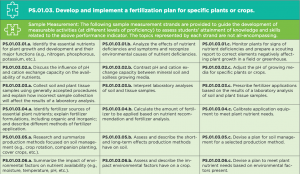This week I completed five fields of Yield Editor data cleaning and learned how to remove the headlands on the fields using the same program. The trickiest part of headland removal to me is making sure to save the four different files (a session and data file before and after the removal) per field. If not all four files are properly saved it becomes a burden to search through all the previously saved files and identify the missing one.
At this point I have been sufficiently caught up to the work done on the precision agriculture course thus far and have begun to make my own contributions. Due to the time constraint of working on this project half of Monday and on Fridays, Steve will be the main content creator and has created an outline the curriculum. I worked on creating content for labs, activities, and projects. Creating this material is more difficult than I had anticipated because there has to be a balance between data driven labs and interactive projects and activities. We are planning to use the same outline that Steve created with Jeff for the lectures for the activities. This will create a simple diagram which will be easy to read and will connect all of the interconnecting parts of the curriculum. The plan is to also create a PowerPoint template to use for the lectures and an outline for a template of lab documents. Having a template for the different aspects of the curriculum will make creating the AFNR standards and filling out the content easier.
Agriculture Food and Natural Resources (AFNR) Standards are guidelines that are applied to a curriculum to show the benefits of the course to the school, teachers, and state. They are meant to build up as you move through the course; therefore, there should be minimal overlap. The standards work through different pathways such as ‘Plant Systems Career Pathways’ then through performance indicators then sample measurements.


